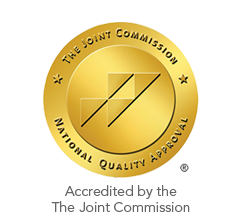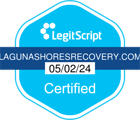Drug Class Explained
The sheer number of drugs available, and the many drug class differences, can be overwhelming and confusing. Do you know the difference between barbiturates and benzodiazepines? This guide will help you to identify the drug class of the most abused substances, what their effects are, how they are abused, and how the federal government assigns their drug class. Recovery from some addictive substances requires treatment at a rehab facility.
Alcohol Drug Class
- Beer
- Wine
- Malt beverages (i.e., hard lemonade)
- Distilled liquors (i.e., whiskey, brandy, etc.)
Usually, Alcoholic beverages that are produced through fermentation (beer, wine, and malt beverages contain no more than 14% alcohol. Beverages that are produced by distillation can contain any percentage up to 100%, or “absolute alcohol.”1
Other types of substances in the alcohol drug class include methanol, isopropyl alcohol, and ethylene glycol. These types of alcohols are used for other purposes and should not be consumed. Drinking these types of alcohols can result in poisoning and possible death.
- Drowsiness
- Impaired concentration and judgment
- Slurred speech
- Impaired coordination
- Blurred vision
- Nausea and vomiting
- Mood changes and depression
Street Names for Alcohol
- Booze
- Sauce
- Brew
- Juice
Alcohol is addictive, and withdrawal symptoms will occur if alcohol is used regularly on a long-term basis. It isn’t on the United States Drug Enforcement Administration’s (DEA) schedule of controlled substances, but it is illegal for anyone in the United States under the age of 21 to purchase and consume alcoholic beverages.
Cannabinoids Class
The most common cannabinoids in its drug class that come from the marijuana plant are as follows:3
Tetrahydrocannabinol (THC) is the most common cannabinoid in marijuana and is the chemical that is responsible for the marijuana “high.”
Cannabidiol (CBD) is not psychoactive and is currently approved by the U.S. Food and Drug Administration (FDA) for the treatment of seizures.
Other cannabinoids in the drug class that are utilized for medicinal purposes include:
- Tetrahydrocannibolic Acid (THCA)
- Cannabidiolic Acid (CBDA)
- Cannabinol (CBN)
- Cannabigerol (CBG)
- Cannabichromene (CBC)
- Tetrahydrocannabivarin (THCV)
- Cannabidivarin (CBDV)
These cannabinoids are used for a variety of physical and psychological ailments and are approved for use in some states, but not approved by the FDA.
Marijuana Leaves
- Euphoria followed by relaxation and drowsiness
- Increased sociability and reduced inhibitions
- Slower reaction time
- Decreased/increased blood pressure
- Increased appetite
- Impaired balance and coordination
- Hallucinations
- Panic attacks/anxiety
Street Names for Marijuana
- Pot
- Grass
- Herb
- Reefer
- Weed
- Bud
- Mary Jane
- Hash
While most people who use marijuana or THC do not develop a true addiction to the drug, physical tolerance, and psychological dependence can develop with long-term use and use in higher doses. Marijuana and THC both continue to be classified as Schedule I substances by the U.S. DEA, meaning that they are illegal. Individual states have opted to change the drug class of both marijuana and THC and not to enforce the DEA’s classification.
Opioid Drug Class
- Opium
- Heroin
- Morphine
- Codeine
- Fentanyl
- Hydrocodone
- Hydromorphone
- Methadone
- Oxycodone
- Oxymorphone
- Buprenorphine
- Tapentadol
- Tramadol
- Meperidine
Most opioids are used medicinally for pain relief. The level and duration of pain relief provided depends on the drug and on how it is extracted or manufactured. Opioids are typically taken orally by pill or capsule, injected via a liquid solution, taken orally in a liquid solution, or administered via a suppository.
- Euphoria
- Drowsiness
- Mental fog
- Dizziness
- Headache
- Slowed breathing
- Nausea/vomiting
- Constipation or diarrhea
Street Names for Opioids
- Smack (Heroin)
- Morpho (Morphine)
- Oxy (Oxycodone)
- Blue (Oxycodone)
- Dillies (Hydromorphone)
- Captain Cody (Codeine)
- Chine Girl (Fentanyl)
Opioids are highly addictive, causing physical and psychological dependence as well as tolerance. Also, due to the side effect of slowed breathing, an opioid overdose can be medically dangerous and possibly fatal. Because of this, all opioids appear on the DEA’s controlled substances schedule. Heroin is the only substance of the opioid drug class on Schedule I because heroin is the only opioid that is not used for medical reasons. Buprenorphine is on the Schedule III and Tramadol is on the Schedule IV. All other substances in the opioid drug class are on the Schedule II. Because of the widespread abuse of opioid medications in the United States, some individual states are tightening their laws regarding the classification and prescription use of opioids.4, 5
Stimulant Class
- Cocaine
- Methamphetamine
- Amphetamine
- Dextroamphetamine
- Caffeine
- Phenmetrazine
- Methylphenidate6
Medications used to treat attention deficit hyperactivity disorder (ADHD) are considered stimulants. Adderall©, a popular ADHD medication, is a combination of amphetamine and dextroamphetamine. Stimulants are used to treat various conditions besides ADHD, including memory loss and other cognitive symptoms as well as weight loss. Stimulant use without a prescription is popular with people who must work long hours or stay up late to accomplish extended assignments, such as college students.
As stated previously, stimulants speed up the systems of the body. Some of the side effects of stimulants include:
- Increased wakefulness and alertness
- Increased breathing rate
- Increased heart rate
- High blood pressure
- Decreased appetite
- Irregular heartbeat
Street Names for Stimulants
- Speed
- Meth
- Crank
- Coke
- Crystal
- Snow
- Crack
Stimulants are ingested in pill or capsule form, smoked, snorted through the nose, or injected. An overdose of stimulants can cause a heart attack or stroke and can be fatal. Cocaine and all forms of amphetamine, including methamphetamine, are classified as Schedule II controlled substances. Other stimulants may be classified as Schedule II or IV, depending on how strong the stimulant effect is. Caffeine is not regulated as a stimulant.
Benzodiazepine Drug Class
- Alprazolam (Xanax©)
- Chlordiazepoxide
- Clobazam
- Clonazepam (Klonopin©)
- Clorazepate
- Diazepam (Valium©)
- Estazolam
- Flurazepam
- Lorazepam (Ativan©)
- Midazolam
- Oxazepam
- Temazepam
- Triazolam
Substances in the benzodiazepine drug class primarily act on the receptors of the brain to calm anxiety. They are all typically taken orally in pill or capsule form. Side effects of these medications can include:7
- Drowsiness/sleepiness
- Dizziness
- Confusion
- Memory loss/amnesia
- Nausea
- Blurry vision
- Constipation
- Sexual dysfunction
- Slowed breathing
- Impaired coordination
Street Names for Benzodiazepines
- Benzos
- Chill Pills
- Candy
- French Fries
Abruptly stopping benzodiazepine use can lead to severe withdrawal symptoms. The risk of overdose with benzodiazepines mainly occurs when people who use these drugs without a prescription combine them with alcohol or opioids. Even though benzodiazepines have been considered “safe” medications since they were introduced, the recent increase in benzodiazepine abuse and overdose, especially in combination with opioids, has led the DEA to classify substances in the benzodiazepine drug class as Schedule IV controlled substances.
Barbiturate Class
- Methohexital
- Thiopental
- Secobarbital sodium
- Butobarbital
- Pentobarbital
- Amobarbital
- Phenobarbital
- Mephobarbital
In the past, barbiturates were commonly used to treat insomnia. Because of the strength of these medications and the risk of overdose, however, barbiturates are rarely prescribed for this purpose today. They are still used if other medications for insomnia are not effective. Substances in the barbiturate drug class are also used to sedate patients before surgery, to treat severe headaches, and to treat seizures.
The primary effect of barbiturates is drowsiness and sleepiness. Other side effects include:7
- Relaxation
- Euphoria
- Headache
- Nausea and vomiting
- Confusion
- Impaired coordination
- Slurred speech
- Poor judgment
- Reduced consciousness or unconsciousness
- Slowed breathing
In recent years, the use of barbiturates has decreased so much that they are now hard for recreational users to get. However, these drugs are still abused by some.
Street Names for Barbiturates
- Barbs or Barbies
- Downers
- Sleepers
- Goof Balls
Using barbiturates puts people at an increased risk of overdose. Even a very slight increase in the dosage of medications can cause an overdose. Normal barbiturate use can slow breathing. As mentioned above, an overdose can cause breathing to stop, resulting in death. Substances in the barbiturate drug class are now classified as Schedule II, III or IV controlled substances by the DEA, depending on the strength of each drug and on how it is used.
Drug Class for Prescription Sleep Aids
- Zaleplon (Sonata©)
- Zolpidem (Ambien©)
- Eszopiclone (Lunesta©)
Taken in pill or capsule form, these medications have fewer side effects than barbiturates or benzodiazepines, but they still have side effects, which include:
- Significant morning grogginess
- Headaches
- Nausea
- Difficulty breathing
- Rebound insomnia
- Depression
- Drug tolerance
Because of these side effects, especially morning grogginess that can affect driving, medications in this drug class were placed on Schedule IV by the DEA.
Ramelteon (Rozerem©) is a new prescription sleep aid that acts similarly to the natural sleep hormone melatonin. Its risk of dependency is low, but it still has a couple of side effects, including dizziness (for any user) and worsening symptoms of depression (for those who are already depressed). Ramelteon is not classified as a controlled substance.
Hallucinogen Drug Class
- Lysergic Acid Diethylamide (LSD)
- Dimethyltryptamine (DMT)
- Psilocybin
- Mescaline/Peyote
- Tenamfetamine (MDA)
- 3,4-methylenedioxymethamphetamine (Ecstasy)
- Phencyclidine (PCP)
Hallucinogens are not used for medical purposes. People use these drugs recreationally for their psychedelic effects. Some people use hallucinogens as a part of religious ceremonies to achieve a connection with the spiritual world. Street names for hallucinogens are:
- Acid (LSD)
- Dimitri (DMT)
- Molly, Mandy (Ecstasy)
- Buttons (Mescaline)
- Magic Mushrooms (Psilocybin)
Most hallucinogens are taken orally by eating a plant part or taking a pill, or by smoking. Hallucinogens are not considered to be addictive, and most people who use them do so only occasionally. However, hallucinogens can still have adverse side effects. These include:1
A “bad trip” where the effects of the hallucinogen are unpleasant or frightening.
Flashbacks also called post-hallucinogen perception disorder
Delusional disorder, where a person becomes convinced that the frightening hallucinations from a bad trip are actually reality
Anxiety, depression, or mood disorders that last more than 24 hours after taking the drug
The use of hallucinogens may also put people at risk of entering dangerous situations, as the hallucinations they induce could cause people to go to unsafe areas or attempt unsafe actions. Substances in the hallucinogen drug class were placed on Schedule I by the DEA, meaning that they are illegal in the United States.
Steroid Drug Class
- Testosterone (Androderm©)
- Androstenedione
- Stanozolol (Winstrol©)
- Nandrolone (Deca-Durbolin©)
- Methandrostenolone (Dianabol©)
Physicians prescribe anabolic steroids for certain medical conditions. These include inadequate production of testosterone in the body due to congenital disabilities or illness, anemia, recovery from burns, HIV wasting syndrome, slowed growth in children, and certain types of breast cancer.9
Anabolic steroids are usually injected, but may also be taken in pill form or through a patch applied to the skin. People abuse anabolic steroids to attempt to enhance their body’s appearance and strength. Athletes may use anabolic steroids to attempt to enhance their physical performance during sports. This practice, called “doping,” has been banned by international sports organizations, including the International Olympic Committee.
Like other drugs, anabolic steroids have adverse side effects, including:
- Fatigue
- Loss of appetite
- Mood swings
- Restlessness
- Reduced sex drive
- Depression
Steroid use can become addictive and can result in steroid cravings and withdrawal symptoms if steroid use is stopped abruptly. Most substances on the steroids drug class are considered Schedule III drugs by the DEA.
Drug Class for Over-the-Counter Medications
- Babor, Thomas, et al. (1994) “Lexicon of alcohol and drug terms,” PDF. World Health Organization; Geneva, Switzerland.
- Facing Addiction in America: the Surgeon General’s Report on Alcohol, Drugs and Health. U.S. Department of Health & Human Services, 2016.
- https://www.dea.gov/factsheets
- https://medlineplus.gov/druginformation.html
- https://www.medicalnewstoday.com/articles/310066.php
- https://www.drugs.com/drug-class/benzodiazepines.html
- https://www.helpguide.org/articles/sleep/sleeping-pills-and-natural-sleep-aids.htm
- https://www.medicinenet.com/anabolic_steroid_abuse/article.htm
- https://www.mdlinx.com/internal-medicine/article/3783

 Matthew Beck B.A, M.A, LMFT
Matthew Beck B.A, M.A, LMFT 


